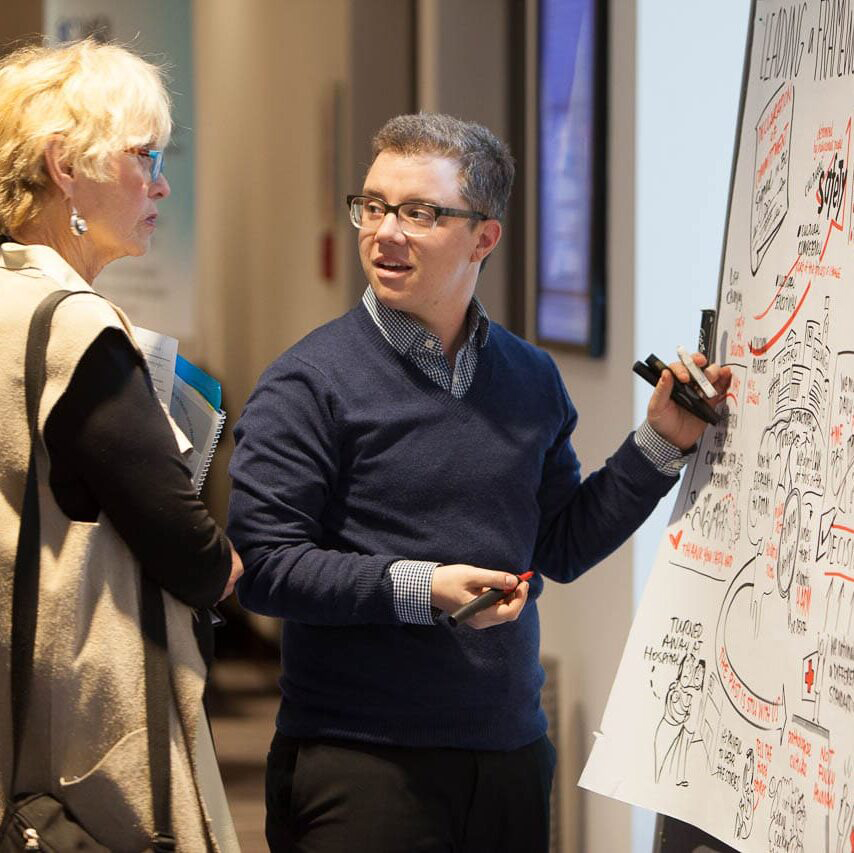
Team-Based Care Pathway Stage 1
Where to Start with
Team-Based Care
In this stage, you may be contemplating a team-based approach to your practice, and may be wondering where to start. If you are an established practice, you may be considering how to recruit team members, based on your patient needs. This stage is also for newly forming teams who want to explore how to work together.
Embarking on your journey with Team-Based Care?
Here’s what to consider in the ‘Where To Start with TBC’ phase:
Who are the patients you are serving?
Understanding patient needs is an essential step in formulating your team goals. Knowing who you are serving can help shape team complement, and determine shared roles and responsibilities.
- Learn how to create Patient-Centred Team-Based Care with this guide.
- Consider the Health Quality Matrix in your service design.
- How will your team approach cultural safety and humility training and embed that into your teamwork?
- Consider panel management, or review population data to support your planning.
- Team complement should reflect the patient need. Remember: you can’t perform patient-centred care without knowing who your patients are.
Who will make up the team?
Team complement will be determined by a number of factors, including patient/population needs, clinic size, space, and overall goals. Designing a team should include an understanding of roles and skills to optimize patient and provider satisfaction.
- Recruitment: see Health Match BC for information on how to post and recruit Allied Health, Nursing and Nurse Practitioners.
- Nursing Resources: See Canadian Nurse Association Primary Care Toolkit including a Sample Primary Care Nurse posting and the RN Recruitment Plan.
- Detailed Role Descriptions are available here for a wide range of team members.
Team Readiness – Are the practice and team members ready to work as a team?
Assessing team readiness includes determining whether the team has what it needs to move forward together. This can include logistics like space and time, and other factors like a joint commitment, a shift in culture and a collaborative model of care delivery.
- See the Team Readiness Checklist to assess your team’s readiness for change.
- Consider setting a Teamwork Agreement early to build mutual accountability, trust, transparency and shared decision-making. Make it visible to all team members.
- Review the basics: Ensure all team members feel safe and prepared to do their job. Consider space orientation and design, introduce team members, review safety policies, schedules, parking.
- See the Team-Based Care Orientation Checklist to support team onboarding.
- Ensure all team members have the equipment to do their job, including Electronic Medical Record (EMR) access.
What are the team members’ roles and how will they work together?
Role clarity and understanding is an important element of team-based care. Knowing your own role in relation to others, and how you may work together, are important for teams to discuss. The best way to understand another’s roles is by observing and spending time with each other.
- Review team members’ role descriptions and make sure you set up time for team members to discuss and learn about others’ roles and scope.
- This toolkit on Navigating the Team-Based Care Journey from the Family Practice Services Committee reviews elements like sharing time and space, building collaborative teams and the benefits of a team approach.
- Set up shadow shifts with other providers. Find time to connect with team members around the same patient.
How will we communicate as a team?
Communication is the foundation of any relationship and this includes the clinical team! In early stages, it is important to discuss how, when and even where your team will communicate.
- Try these ATTIC tools to break the ice, and get your team communicating!
- See this Toolkit on Communicating As a Team to get started.
For additional supports for your TBC journey see:
- Doctors of BC: Practice Improvement Program Team-Based Care Coaches – psp@doctorsofbc.ca
- Rural Coordination Centre of BC (RCCbc) Quality Coaching Program
- Your local Health Authority may have Team-Based Care supports available
- If you are part of a Primary Care Network there may be Change Management supports available. See your local Division of Family Practice for more information
- UBC Innovation Support Unit – Department of Family Practice
- Team-Based Care BC maintains an expert list of leaders and content experts across the province and can help you find the support you need
As always, if you know of a great resource or tool that should be added to this pathway or the teambasedcarebc.ca website, please contact us at info@teambasedcarebc.ca.
Even for well-established teams, it can be useful to revisit things like vision and purpose, and consider elements like team complement and efficient space design. Communication is an essential element to effective, high-quality team-based care, so finding time to work on this is key! Investing in time to huddle, connect and communicate will pay off in the long run for your patients, and your practice. Finally, the most important aspect of team-based care is the patient. Remember to place the patient at the centre of the team, and ensure that cultural safety and humility are guiding your practice. We wish you all the best in your TBC journey!